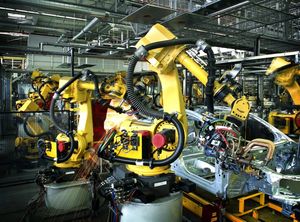
Best Options for Welding Respirators to Combat Chemical Fumes
Welding is a critical process across many industries, but it comes with serious risks—not just from heat, sparks, and light, but from airborne chemical hazards. As toxic fumes from metals, coatings, shielding gases, and fluxes impair lung function, cause long-term disease, or even acute poisoning, welders need robust protection. At TynoWeld, we understand these dangers, and we also know that choosing the right welding respirator combined with a high-quality auto darkening welding helmet can mean the difference between safety and harm.
The Problem: Chemical Fumes & Welding Hazards

When welding, multiple harmful substances enter the air: metal oxides (like iron, manganese, chromium), chemical vapors from paint or coatings, gases such as ozone, nitrogen oxides, or carbon monoxide. Some specific concerns:
-
Hexavalent chromium (Cr VI) formed when welding stainless steel or chromate-coated parts is highly toxic and carcinogenic.
-
Manganese fumes may lead over time to neurological effects (similar to Parkinson’s disease) with repeated exposure. Metal fume fever and irritation of the respiratory tract occur with lower-level exposures.
-
Gases from shielding or flux can displace oxygen or cause breathing difficulty. Confined or poorly ventilated spaces exacerbate these risks.
Mitigating fume exposure is not optional—it’s essential. Regulations (such as OSHA in the U.S.) set Permissible Exposure Limits (PELs) and require protective equipment when those limits can be exceeded.
The Solution: What to Look for in Welding Respirators + Helmet Combos
To effectively protect against chemical fumes, welders need more than a basic respirator. Here are key features and options:
Key Criteria
-
Assigned Protection Factor (APF): The higher, the better. APF tells how well the respirator can reduce exposure. Tight-fitting full-face or powered air purifying respirators provide much higher APFs.
-
Filter Type & Efficiency: Filters like P100, HEPA, or filters with organic vapor cartridges may be needed depending on the kinds of fumes or gases present.
-
Compatibility with Welding Helmet / Auto Darkening Lens: Respirators must integrate (or be compatible) with welding helmets—optical clarity, shade switching, headgear comfort, weight, field of view. An auto-darkening welding helmet that also accommodates respiratory protection is ideal.
-
Comfort & Usability: Power-assisted respirators (PAPRs), good airflow, cooling, weight distribution, headgear adjustments. If the gear is uncomfortable or hinders vision, welders may adjust or remove it, reducing safety.
-
Maintenance, Filter Replacement, Seal Fit: Even excellent devices fail if filters are clogged, seals are leaking, or components are damaged. Tight fit is essential. Regular inspection is required.
| Type | Pros | Cons | Best Use |
|---|---|---|---|
| Disposable or reusable half-mask respirators | Lightweight; relatively low cost; easy to carry; suitable for lower fume concentrations. | Requires tight seal; not always compatible with full-face helmet; limited protection against certain gases; breathing resistance. | Weld shops with good ventilation; occasional welding; supplemental to other controls. |
| Full-face air-purifying respirators / gas masks | Added eye/face protection; higher APF; better suited for work with gas/vapor hazards. | Heavier; may fog; more costly; less airflow. | When fumes include harmful vapors (e.g. paints, coatings) or when eye irritation from gases is a concern. |
| Powered Air Purifying Respirators (PAPR) (helmet or hood version) | Excellent protection; continuous airflow reduces fatigue; works well with welding helmets; less breathing resistance; usable even with facial hair (loose-fitting hoods). | Higher upfront cost; battery maintenance; bulkier; need charging and spare filters. | Heavy-duty welding, high fume production, long hours, indoor or enclosed spaces, or when other PPE is required (helmet + respirator). |
TynoWeld’s Best Options

At TynoWeld, we offer several welding respirators and auto-darkening welding helmet combinations optimized for chemical fume protection:
-
AIRPR series: respirators built to integrate with our auto darkening welding helmets. For example, AIRPR TN15-8610 and AIRPR TN360-9100 models are designed for compatibility, comfort, and high filtration capability.
-
Auto darkening welding helmets with PAPR headgear: These helmets combine the required eye and facial protection (sensors, shade control, UV/IR blocking) with powered filtered air to ensure that harmful fumes are kept away. The lens also offers quick response auto darkening so arc flares will not compromise safety.
-
Filters with high optical class (e.g. 1/1/1/1) for clarity and minimal distortion, and replacement filters compatible with helmet-respirator systems.
Why TynoWeld?
When choosing respirators and helmets, trust matters. Here’s what sets TynoWeld apart:
-
Integrated Helmet-Respirator Systems: We design respirators and auto-darkening welding helmets to work together, not just as add-ons. That means better seal, better comfort, and better performance.
-
Certifications & Safety Standards: TynoWeld products meet CE standards, and filters / helmets are tested for UV/IR protection, optical clarity, shade switching, and respirator APF.
-
Durability & Replacement Parts: Our helmets use quality lenses, filters, and spare parts are available. Ensuring long-term fit and filter efficiencies is central to performance.
-
Ergonomics & Comfort: Battery life, airflow, weight balance, field of view—features that make it realistic for welders to wear the respirator helmet for extended periods without fatigue.
-
Product Range: From lighter half-mask or full-face respirator compatible helmets, to robust PAPR systems, to top lens optical classes—TynoWeld covers the spectrum so you can pick what matches your hazard level and budget.
Conclusion
Protecting welders from chemical fumes requires more than basic masks—it demands thoughtful selection of respirators, filters, and compatible auto darkening welding helmet systems. By understanding hazard levels, choosing APF-appropriate gear, maintaining seals and filter performance, and using comfortable, well-certified equipment, respiratory risks can be significantly minimized.
With TynoWeld’s respiratory welding helmet solutions—especially those integrating auto darkening helmets and powered air purifying respirators—you can achieve both safety and productivity. The best option depends on your environment and exposure; we at TynoWeld are committed to helping you choose wisely.
Media Contact
Company Name: Hangzhou Tainuo Electronic Tech Co., Ltd.
Email: Send Email
Country: China
Website: https://www.tynoweld.com/






